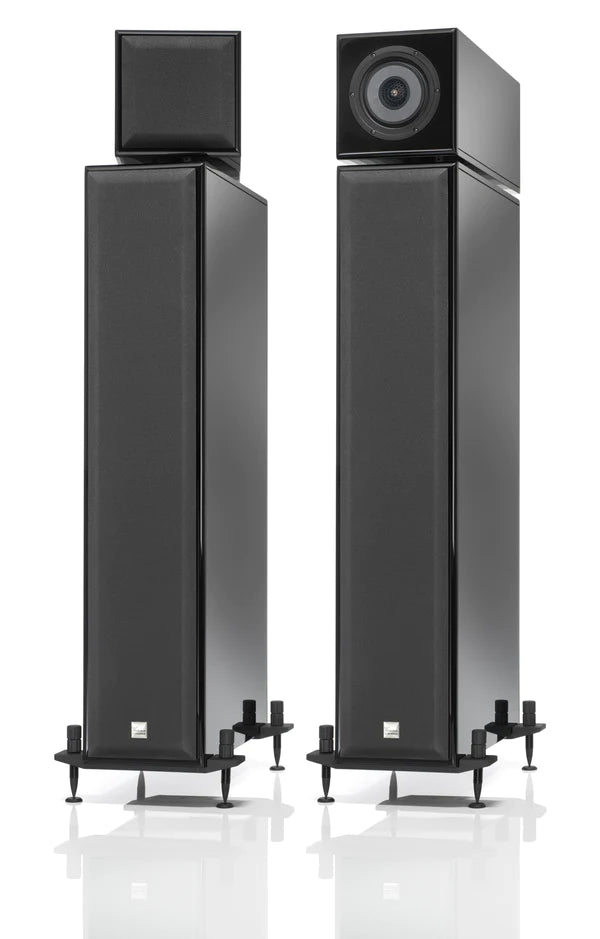The plane surface of the spidercone offers the advantage of precise, piston-like movement. Any diaphragm should move in and out as one unit, not as a quivering mass of uncorrelated vibrations. It should move as a perfectly-solid piston. The flat cone is extremely stiff, with bracings of a height of 18 mm (bass) and 14 mm (mid), yet light, respectively, further reinforced by glasfibers in our new X4P™ mixture.
The rearside bracings are constructed in a way that the whole impulse energy is allocated evenly via the whole surface of the flat cone. Every square centimeter delivers the same impulse as its neighbours, which results in revolutionary impulse response control. As our cone/diaphragm-construction builds upon a very large voice coil, the radiating surface in its middle is large, thereby making it an significant sound determinant. The countless listening
testings brought forth such an unexpected unique combination the we gave it a new name, the Composite Cone. The 5cm area of LISZT REFERENCE’s bass drivers is now an inverted dome made of woven fabric, double-coated on its rearside. Perfection was achieved by listening to various axial positions, with extraordinary homogenous results by employing a recessing of 8mm. The sum total of the features of the Composite Cone is a peerless symbiosis. Furthermore, one of the reasons why the woven fabric center cone interacts so nicely, is its affinity to the fabric material of our silk dome tweeter.
LISZT REFERENCE’s new tweeter is a coaxial adaption of the super-tweeter employed in our flagship „The Music“. The careful adjustment of the general construction applied to a coaxial arrangement has fantastic advantages, in addition to the obvious ideal of performing in the center of the midrange – the point source. This provides for uncanny precision in spaciousness, while the ring radiator tweeter construction results in breathtaking resolution, but maintaining heartwarming naturalness.
Not apparent to the eye is the artfully articulated bracing structure, as well as the carefully chosen separate enclosures for the individual drivers. What is apparent to the eye is the warmth of the handselected veneers, as well as the depth and pureness of the true piano lacquer.
Great engineering demands the angularity; great design achieves an artful form that confers quality and substance.


